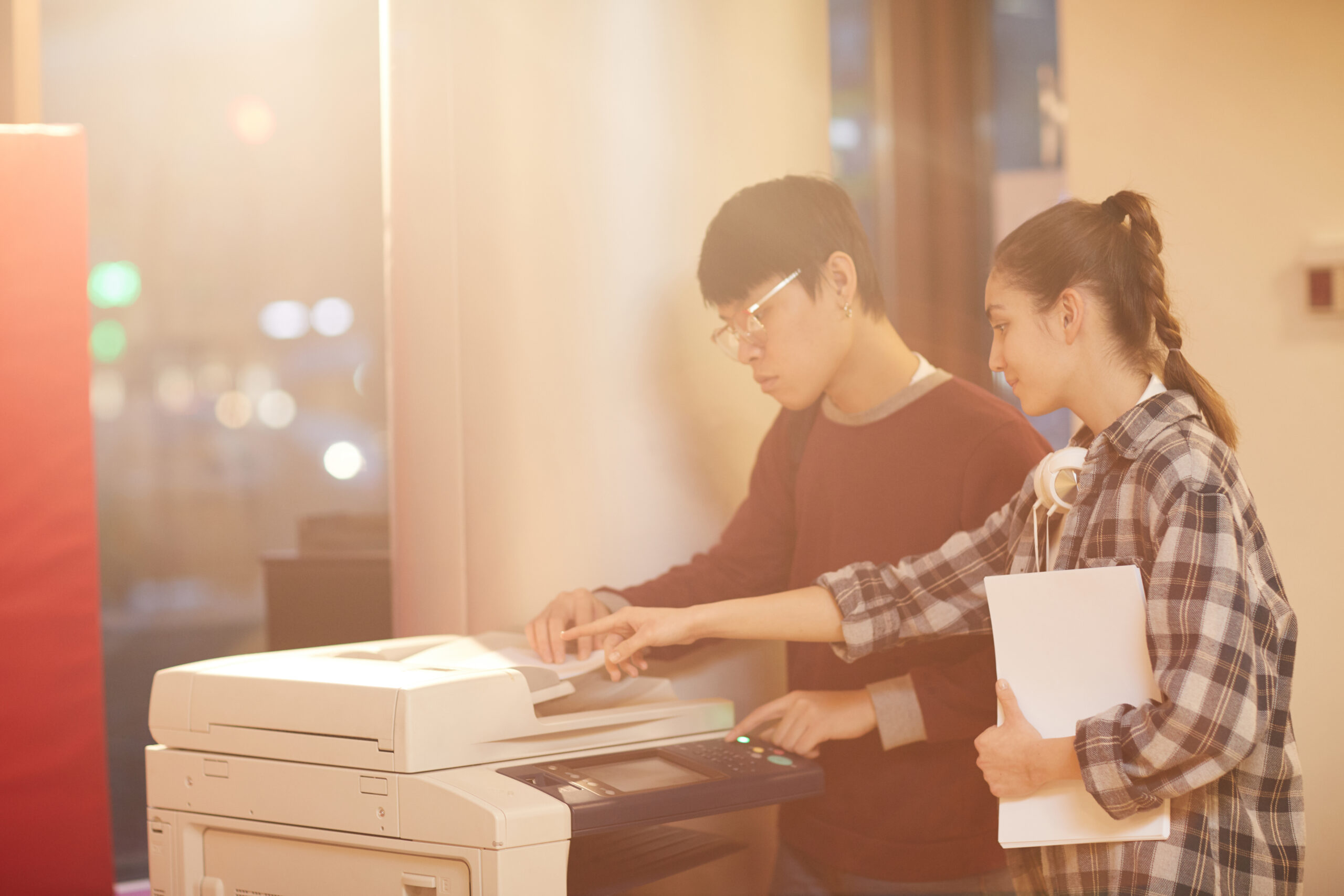This printer is also known as ink-dispersion. The way inkjet printers work is, that it has a printhead as well that is connected to a carriage that carries the ink. The carriage is then moved back and forth with the help of a belt and motor so that the ink can cover the whole page. There is a roller that grabs the paper from the paper tray typically resides under or inside the printer, or a feeder that resides in the back of the printer and helps it through the printer.
Ink ejection
There are tiny tubes that help the ink to be ejected. How the ink is moved depends on the technology it uses. Most of the inkjet out there uses heat, while others use mechanical methods to move the ink. Printers using a heating mechanism, use tiny resistors or electroconductive plates which are at the end of each tube that boils the ink. This in turn creates a little air bubble that ejects droplets of ink onto the paper, and the image is then created.
Ink cartridge
The ink is stored in a container called an ink cartridge. Previously, older inkjets used two cartridges, one black and another for colored ink. The color cartridge itself had distinct compartments for individual colors like Cyan (Blue), Magenta (red), and yellow. They printed colors using the method most popularly known to all graphic designers or students of art school, CMYK. The pain in the bum was, that if one of the colors ran out, you had to buy the whole cartridge or had to go through the messy refill kit.
Fortunately, printer manufacturers realized the inconvenience and began to separate the ink colors into three separate cartridges. One for black and the rest for the individual colors. Surprisingly, this was not only just cost-effective but printed really good high-quality images.
Now, you can find these inkjets with up to six or eight or even more color cartridges. Generally, printers using more color cartridges are quite expensive but produce rich content.
Refillable ink tanks
Manufacturers like Epson and Canon introduced an ink-jet printer with refillable ink tanks, creating a massive change in printer economics. With this the disappointment and guilt, every time you had to throw a half-full ink cartridge is gone with these new refillable ink-jet printers. Printers like the Epson EcoTank series, cost quite a lot more than their previous models, something around $400 to $600, but it comes in with a couple of years worth of ink right out of the box.
Print resolution and print speed
The two distinct features that these inkjet printers have is the print resolution and the print speed. Print resolution is measured in a combination of horizontal and vertical dots per inch (DPI), like 2400 x 600 DPI. The higher the number, the dots are more closer to each other, resulting in a much better quality picture.
Resolution is something to carefully consider when you need to print any complex images with full colors, or duplication. Print speed measurement is known as pages per minute (PPM). This piece of information is generally found on the box of printer. Most printers have two distinct speeds for monochrome and full-color printing.
Media support
Another marvelous feature of inkjet printers is, that they can support a wide array of print media. You can print on various types of matte, glossy photo papers, iron-on transfers, or any kind of special media. There are printers that can print directly onto a special coated optical disc, or even on fabric! It is like running your T-shirt through the printer you got your own custom T-shirt.
The ink over the years has developed so much in terms of longevity and quality. Older inks are smudged in case the paper was wet or faded after a short time, whereas modern inks are smudge-proof and extremely long-lasting if ever faded at all. Not kidding but some of the Epson are estimated to last up to 200 years. You can test it out, just make sure to pass the test on to your descendant.

